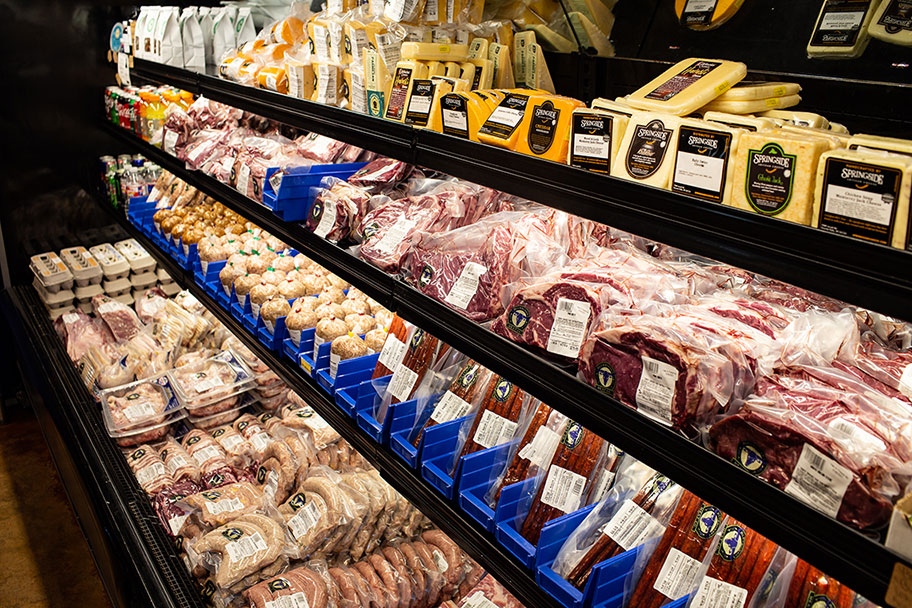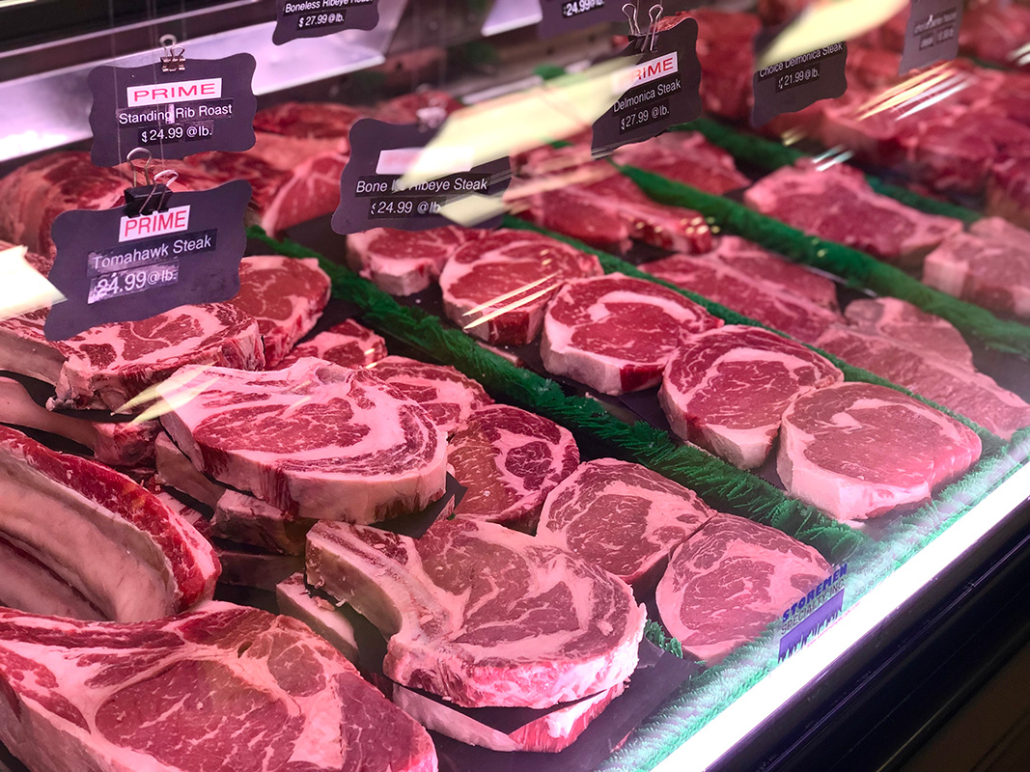Bagley Farms Meat Market Edwardsville IL: Your Best Destination for Neighborhood Meat Choice
Bagley Farms Meat Market Edwardsville IL: Your Best Destination for Neighborhood Meat Choice
Blog Article
Reveal the Art of the Butcher's Cut in a Modern Meat Market
In the ever-evolving landscape of contemporary meat markets, the butcher's cut has actually transcended its conventional origins, combining age-old workmanship with contemporary techniques. Today's butchers are not simply processors of meat; they are educated craftsmens that emphasize sustainability and moral sourcing. Their expertise in picking and preparing cuts customized to certain culinary needs supplies an unmatched eating experience. Yet, what absolutely sets the modern butcher apart is their capability to forge a much deeper link between consumers and the beginnings of their meat. Exactly how do these masters balance practice with innovation, and what effects does this have for the future of meat consumption?
Development of Butchery Strategies
The development of butchery techniques mirrors a rich tapestry of technology and adaptation driven by innovations in innovation, modifications in consumer demand, and a much deeper understanding of meat scientific research. Historically, butchery was a craft gave through generations, with techniques developed over centuries to maximize yield and taste. The commercial revolution ushered in mechanization, transforming traditional practices and allowing large processing.
The mid-20th century saw butchery strategies further fine-tuned by clinical understandings into muscular tissue biology and meat aging, enhancing both tenderness and taste. Technologies like vacuum cleaner packaging and refrigeration expanded product shelf-life, permitting butchers to branch out offerings and boost quality assurance. This period additionally noted the surge of specific equipment, such as band saws and meat slicers, which increased precision and performance in meat handling.

The 21st century has presented digital technology right into the butchery realm. Digital systems currently assist in monitoring pet provenance and optimizing cuts to satisfy particular client preferences. Furthermore, a rebirth in artisanal butchery has actually emerged, mixing conventional abilities with modern-day understanding to cater to consumers seeking honest and lasting meat options. This development underscores a dynamic interplay in between custom and innovation, conference contemporary needs while preserving the craft's heritage.
Understanding Meat Cuts
Understanding the ins and outs of meat cuts is necessary for both butchers and customers seeking high quality and value. For butchers, accurate cuts show skill and regard for the craft, guaranteeing marginal waste and ideal yield.

Recognizing muscular tissue make-up is critical; muscular tissues utilized much more regularly by the pet have a tendency to be tougher and are best fit for slow-moving cooking methods, while less-used muscle mass, like those discovered in the loin, are much more tender and ideal for barbecuing or roasting. Knowledge with these differences encourages customers to make enlightened choices, enhancing their culinary ventures.
Picking High Quality Meat
Choosing the appropriate meat involves even more than simply selecting a visually enticing item from the display. The art of picking quality meat calls for a discerning eye and expertise of particular features that represent quality and quality.
Second of all, consider the marbling, which describes the white flecks of fat within the muscular tissue. click to read Appropriate marbling is a vital indicator of tenderness and taste, as it melts throughout food preparation, improving the meat's juiciness. Keep in mind, greater marbling usually associates with superior high quality cuts, such as USDA Prime.
Appearance is an additional essential element; meat needs to really feel solid to the touch, not slimy or extremely soft. In addition, bear in mind the fragrance. Fresh meat should have a clean, neutral smell, without any click over here now sour or repulsive smells.
Coupling Cuts With Food Preparation Approaches

On the other hand, harder cuts like brisket and chuck roast are abundant in collagen, which damages down right into jelly when cooked slowly. These cuts are perfect for braising or slow-moving roasting, enabling the meat to tenderize in time and develop deep, intricate tastes. Cuts such as short ribs and pork shoulder fare well with slow-cooking techniques, where prolonged cooking times transform their robust appearances into delicious dishes.
Lamb shanks and oxtail, which need long term food preparation to tenderize, are ideal candidates for stewing or slow simmering. These methods coax out rich, passionate flavors while keeping dampness. By recognizing the unique features of each cut, cooks and home chefs alike can elevate their culinary creations, ensuring each meal is both satisfying and remarkable.
The Butcher's Role Today
Navigating the advancing landscape of the contemporary meat market, the butcher's role today prolongs beyond simple prep work of cuts. Contemporary butchers are culinary artisans, instructors, and supporters for sustainable techniques.
In enhancement to crafting accurate cuts, butchers now engage straight with customers, using cooking advice and customizing choices to match individual needs and choices. Their knowledge in meat aging, marbling, and taste profiles encourages customers to make enlightened choices, boosting their culinary experiences. This individualized solution exhibits the butcher's developing function as a relied on advisor in the kitchen area.
Furthermore, butchers are pivotal in minimizing waste, making use of entire animals to develop diverse items such as sausages and stocks. This comprehensive approach not only values the pet yet also lines up with modern sustainability objectives. By doing this, the modern butcher personifies both practice and innovation, adapting to an ever-changing market while maintaining the artistry and stability of their helpful resources craft.
Conclusion
Mastery in recognizing varied meat cuts and high quality signs empowers butchers to give educated recommendations, lining up details cuts with ideal cooking methods. By honoring historical methods while accepting contemporary needs, the butcher's duty stays vital in today's advanced meat market.
Report this page